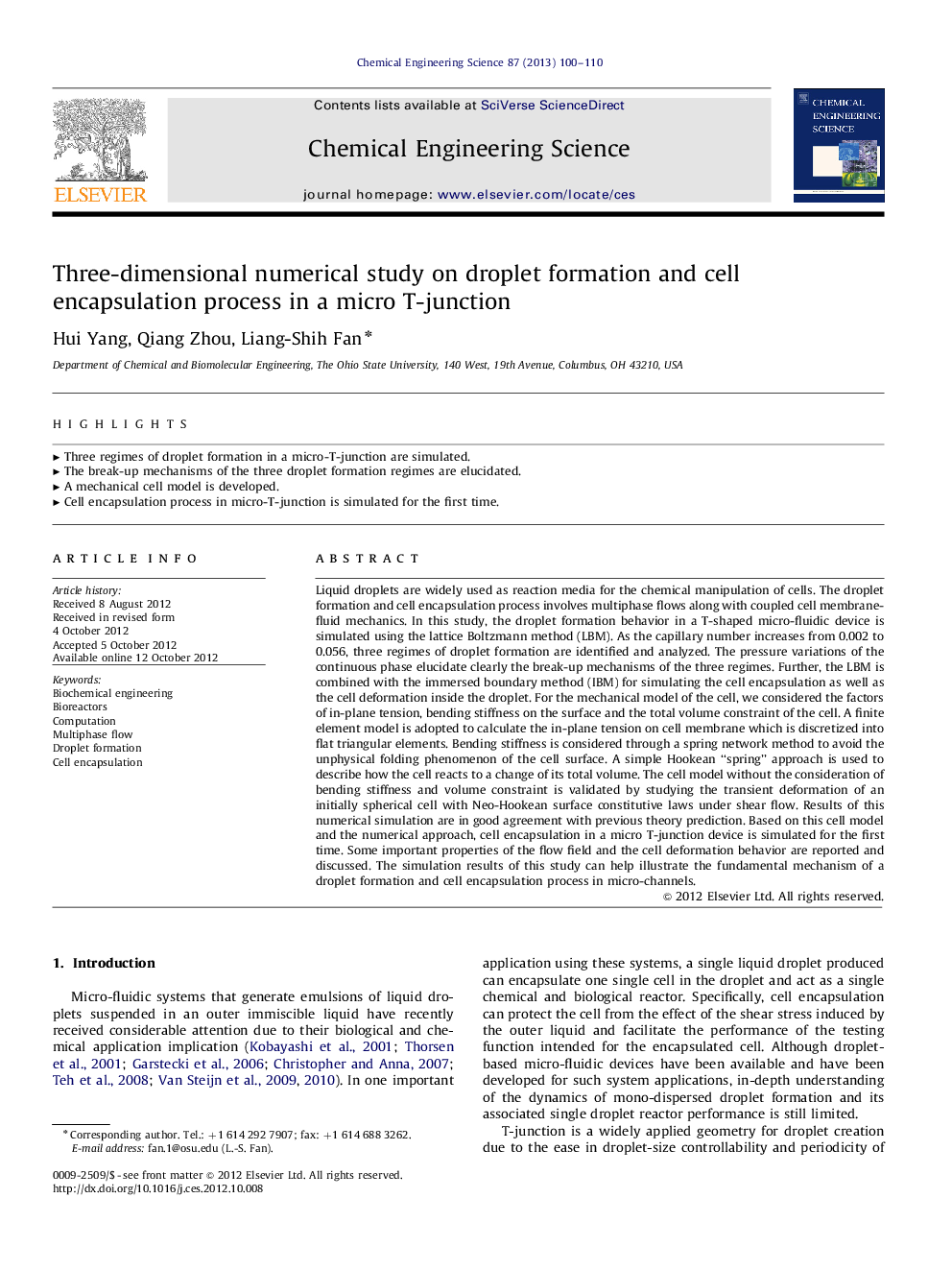| Article ID | Journal | Published Year | Pages | File Type |
|---|---|---|---|---|
| 155408 | Chemical Engineering Science | 2013 | 11 Pages |
Liquid droplets are widely used as reaction media for the chemical manipulation of cells. The droplet formation and cell encapsulation process involves multiphase flows along with coupled cell membrane-fluid mechanics. In this study, the droplet formation behavior in a T-shaped micro-fluidic device is simulated using the lattice Boltzmann method (LBM). As the capillary number increases from 0.002 to 0.056, three regimes of droplet formation are identified and analyzed. The pressure variations of the continuous phase elucidate clearly the break-up mechanisms of the three regimes. Further, the LBM is combined with the immersed boundary method (IBM) for simulating the cell encapsulation as well as the cell deformation inside the droplet. For the mechanical model of the cell, we considered the factors of in-plane tension, bending stiffness on the surface and the total volume constraint of the cell. A finite element model is adopted to calculate the in-plane tension on cell membrane which is discretized into flat triangular elements. Bending stiffness is considered through a spring network method to avoid the unphysical folding phenomenon of the cell surface. A simple Hookean “spring” approach is used to describe how the cell reacts to a change of its total volume. The cell model without the consideration of bending stiffness and volume constraint is validated by studying the transient deformation of an initially spherical cell with Neo-Hookean surface constitutive laws under shear flow. Results of this numerical simulation are in good agreement with previous theory prediction. Based on this cell model and the numerical approach, cell encapsulation in a micro T-junction device is simulated for the first time. Some important properties of the flow field and the cell deformation behavior are reported and discussed. The simulation results of this study can help illustrate the fundamental mechanism of a droplet formation and cell encapsulation process in micro-channels.
► Three regimes of droplet formation in a micro-T-junction are simulated. ► The break-up mechanisms of the three droplet formation regimes are elucidated. ► A mechanical cell model is developed. ► Cell encapsulation process in micro-T-junction is simulated for the first time.
